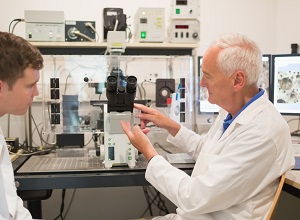Resume writing tips

Some advertised positions include the contact details of a representative for which you can contact if you have any questions. If this option exists you should ask a question or two. This may help to ensure you do not make any serious mistakes. For example, you can ask questions about the resume length preferred by the employer. When asking questions, make sure to mention your name as the contact person may be the person reviewing the resumes. When reviewing your resume the contact person may remember your keen interest based on your questions.
White space is crucial on a resume so the content does not look too dense. Boxes or lines may be used to separate different sections (e.g. work experience from education) and larger font, bold text, and/or light grey background shading may be used to make major headings etc stand out. Don't use bright colours that a potential employer reviewing your resume may consider unattractive. Make sure the resume is easy to read (not confusing) as those reviewing your resume will likely be busy with limited time. A neat, clear, logical flowing resume will be appreciated, showing your professionalism and effort.
There is no rule for the length a resume should be. 2 – 3 pages is ideal, unless the employer states that less or more information is required. The length depends on the type of position you are applying for. If applying for manager, researcher or academic positions, a longer resume may be required compared to positions such as laboratory assistants etc where a shorter resume may be fine.
A font size of 10 – 12 is ideal for content. Arial, Times New Roman or Calibri are good fonts. Use larger fonts for headings.
The most common features / sections displayed on a resume include:
1. Personal details
2. Experience
3. Skills
4. Education
5. Interests
6. Referees
Including these features on your resume in the order shown above is a good option though there is no strict rule. If you are applying for your first research position and you have just finished your PhD it would be logical to put your education first if all your work experience includes part-time non bioscience related positions. If you are applying for a sales rep position for a scientific company and you have previous sales experience working for scientific companies it would be logical to put your experience first. As the potential employer will likely be very busy with numerous resumes to review it may be unwise to include additional features on your resume unless necessary. For example, it would be necessary to include a section titled Publications, if you are applying for an academic position. Remember, the cover letter also gives you an opportunity to provide more information about yourself.
Your name can be used as the heading for this feature / section rather than using the heading personal details. In this case your name will be very clear as the second line on your resume after the word resume at the top of the document. Beneath your name you should include a phone number and email address. When including your email address on your resume make sure to have a professional / serious address. This should include your full name rather than a funny sounding nickname etc. At this stage you do not need to include your house number of street name but you should include the city, state & country where you reside. If you reside in a different state or country etc, you can mention in a cover letter your ability to relocate within a given time.
The heading for this feature / section could be: experience, work experience, work history, or employment record. Your experience should be listed in order starting with the most recent. Include the employer company name, dates you worked for this employer, your position title, and your duties. A resume is easy to read if your duties are described in dot / bullet points using 5 – 10 words for each point. List your most important duties, or the duties that are most relevant to the position you are applying for. 2 – 6 duties is ideal as this is easy for a reviewer to browse. Most positions will also have some selection criteria to address which will allow you to describe your duties in greater detail on this document.
If there is a gap in your employment record / work history, explain it positively. Maybe you stopped work to commence further study, or you spent time relocating from one country to another, or you were caring for a child or a sick relative which is a highly responsible & respectable task.
A resume is easy to read if your skills are described using dot / bullet points with 3 – 10 words / one line for each point. List your most important skills, or the skills that are most relevant to the position you are applying for. 5 – 10 skills is ideal as this is easy for a reviewer to browse. It is a good idea to include computer skills (along with your various other skills) as most positions in bioscience require computer usage. For all the skills you list be specific. Using computer skills as an example, do not just say you have computer skills, but rather mention spreadsheet skills etc. If you have spreadsheet skills you obvious have general computer skills though you don't need to directly mention you have general computer skills. Describing yourself as general will not put you ahead of your competitors.
Education should be listed in order starting with the most recent. Your education details should include the exact award, year completed or awarded, and institution where you studied. If your award is a Masters or Ph.D etc, make sure to mention the research area e.g. cancer, genetics, neuroscience etc. Most employers are not interested in what you did in high school, but prefer to know what you did at college or university etc, as this will likely be more relevant to the position you are applying for. Don't waste their time with high school details.
It is not necessary to include interests on your resume. If including interests make sure it is very short. 2 – 3 sentences or 3 – 5 dot points is ideal. It is an opportunity to present yourself positively. If you mention you like swimming or cycling, a potential employer may perceive you as having energetic qualities. If you mention you like walking or yoga, a potential employer may perceive this as a stress relieving exercise. Having an employee with a good weekly routine for stress relief could be considered a good asset for work productivity.
A minimum of 2 referees should be included. It is most common to use a former boss (company owner or manager etc). For recent graduates you could use your teachers / lecturers. Make sure to ask potential referees first, before you list them. Even if they agree, make sure you are confident they will give you a good reference.
Consider what the keywords are for the position you are applying. Try to use these key words in the dot points for your skills list, or in the dot points for your duties under your work experience. This will help you look more suited to the position.
Make sure to run your text through a spelling checking program.
Use a dictionary if you are unsure if you are using the correct word. Many dictionaries are free to use online. For consistency you can check your word in multiple dictionaries. It only takes a minute online.
Read over your resume several times. If you have just completed your resume and you are tired. Get some rest, then read over it a few hours later or the next day when you are fresh.
Ask a family member, friend or colleague to read your resume. This may not be professional advice but it is free. Maybe they will identify some punctuation or grammar errors etc, even if they are not qualified in the same field as you. If you like, you can ask 2 or 3 people.
Don't get tips / advice from just one source. The more knowledge you have, the better your resume will be. Use a search engine to find a variety of websites that provide resume tips / advice. You can also search for resume tips / advice videos on YouTube etc.
Should a cover letter be included with the resume? Some employers ask for a cover letter. If they don't, you should still include one as this shows you are putting in additional effort beyond your resume, and are therefore likely to be significantly interested in the position. It is a good opportunity to demonstrate your writing skills. Furthermore, your competitors may be including cover letters. It can be useless if it is too short, and annoying if it is too long as recruiters / employers are often in a hurry with limited time. 2/3 to 3/4 of a page is often sufficient. Do not make the cover letter a repeat of your resume. The cover letter should include different information, most importantly, why you want the position, why you are the ideal candidate, and how you will add value to the company or institute etc. It is also an opportunity for you to mention points like your ability to commence the position immediately, or your ability to relocate within a very short period of time.
Most positions require potential candidates to address selection criteria on a document separate to their resume. Though selection criteria is different from position to position, try to include statements / examples describing how you have demonstrated the ability to work independently, take responsibility, problem solve, manage time efficiently, pay attention to detail, and have good verbal and written communication skills, as most positions require these qualities. Use your selection criteria statements to direct attention to key points on your resume.
Consider having a professional online profile (e.g. LinkedIn) that you list on the your resume. This should be listed under personal details along with your email address etc. For a LinkedIn profile, the sub-heading on your resume should say: “LinkedIn professional profile”. Paste your LinkedIn profile public URL under this sub-heading. If you are using Microsoft Word or similar, the program should detect the URL and convert it into an underlined hyper-link. Make sure to click on it to test it works. A hyper-link is obviously only useful if you are emailing your resume (not printing and posting it which is very rare now). Your online profile should be well presented similar to your resume. Including an online profile can be an advantage as it makes a potential employer feel like they know you better because they have seen your photo etc. Furthermore, your competitors may also be including their online profiles. Including an online profile can be a disadvantage if it includes network connections for which you have very few (e.g. less than 10). It can be even more disadvantageous if your name and photo allows potential employers to identify your non-professional online profiles (e.g. Facebook) for which you may have displayed yourself in such a way you would not like a potential employer to see.
The resume writing tips presented above should assist you to write an excellent resume at no cost. However, if you would like to use a professional resume writing service, it would be a good idea to create the best resume you can on your own, then submit it to the resume writing service so they can make suggestions for improvements. You could let them know you would like to use them as a resume advisory service rather than a resume writing service, as doing so may be cheaper for you. See the Bioscience jobs starting page for resume writing services and more.
If you are confident with the design, layout, size and details you have included on your resume, and you feel you don't need the assistance of a complete resume writing (or advisory) service, but you would still like a little help to make sure the spelling, punctuation, grammar, and word choice is correct, a much cheaper option could be to use a draft editing & proofreading service.














